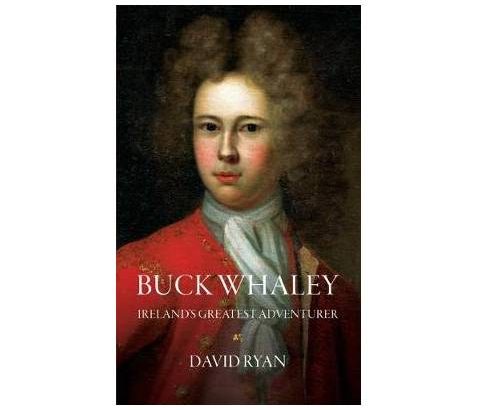Buck Whaley: Ireland’s greatest adventurer
by David Ryan (Merrion Press, €16.95 / £14.99)
Andrew Carpenter
This is a highly entertaining, well-written account of the life of one of 18th-Century Ireland’s most famous characters, Thomas ‘Buck’ Whaley.
Born into a wealthy Anglo-Irish landowning family in 1765 – he was the heir of landowner, magistrate and former Member of Parliament Richard Chappell Whaley, better known to some as ‘Burn Chapel Whaley’, of strong anti-Catholic views – the young ‘Buck’ was initially brought up in the family home in Dublin, 96 Stephen’s Green; this palatial building is now part of Newman House, and is still the setting for some of the most spectacular interior plasterwork in Dublin.
However, the boy was not impressed by his surroundings and soon showed signs of restlessness and a love of danger, later describing himself as having ‘strong passions, a lively imagination and a spirit that could brook no restraint’.
After education in Portarlington and Paris, Buck Whaley embarked on a life of spectacular expenditure, squandering the equivalent of hundreds of millions of euros in 15 years. Much of the money went in gambling, but his love of drink meant he was easy prey for cardsharpers and cheats all over Europe, and he was pursued by creditors all his adult life.
Whaley was drawn to almost any kind of danger – trying to climb Mont Blanc without proper equipment, potholing in unexplored caves deep below Gibralter, engaging in duels (one over an early incident of ‘road rage’), or trying to rescue the French king, Louis XVI, from the guillotine.
Another of his lifelong activities was chasing women and wherever he went, Whaley left behind him a trail of beautiful girls, seduced and abandoned. As David Ryan’s book charts an expert course through all Whaley’s romantic and physical adventures, the reader can only admire the man’s physical stamina and it comes as little surprise to learn that he died at the age of only 34.
Caper
Whaley’s most famous caper was his extraordinary return journey from Dublin to Jerusalem in 1788-89. This was undertaken for a wager and exposed him to all kinds of dangers: storms, pirates, the plague, a ruthless Turkish governor and the appalling privations of travel in the Middle East at that time.
This is the best documented part of Whaley’s life and Ryan gives the reader a good idea not only of the strange and unsettling things Whaley and his companions saw and experienced on the trip, but of their response to the exotic and dangerous world through which they were travelling.
We learn a lot, also, about life on the European continent in the last years of the 18th Century, particularly about the world of gambling and high life. The book contains a lot of information which Ryan has drawn from three primary sources – Whaley’s own memoirs, the letters he wrote to his Irish agent and an unpublished manuscript journal kept by the man who accompanied Whaley to Jerusalem, Captain Hugh Moore.
Though the result is a book full of information, Ryan handles his scholarship lightly and the book is a pleasure to read: there are useful illustrations, including the striking portrait on the cover showing Whaley as a young man about to embark on a life of adventure and dissipation.
Still, it was his personal resilience that kept Whaley alive and, despite all his failings, one cannot help but like this irresponsible wastrel.
David Ryan’s previous book, Blasphemers & Blackguards: The Irish Hellfire Clubs (Merrion Press, €16.99) will fill out more of the 18th Century background for interested readers.


 Buck Whaley: Ireland’s greatest adventurer
Buck Whaley: Ireland’s greatest adventurer 